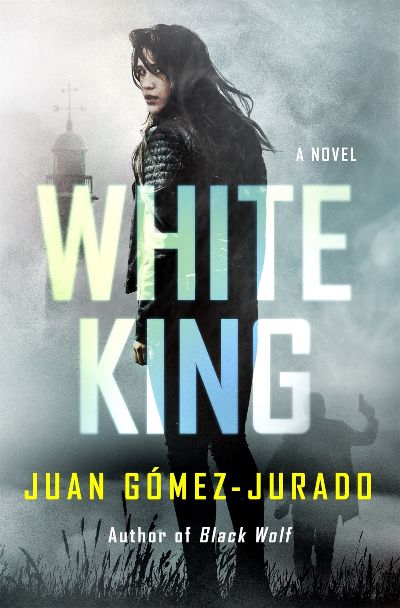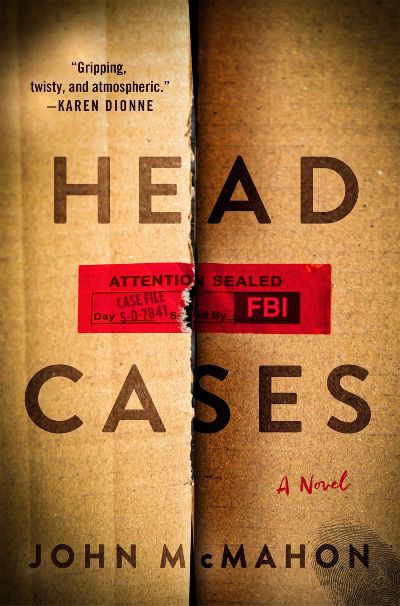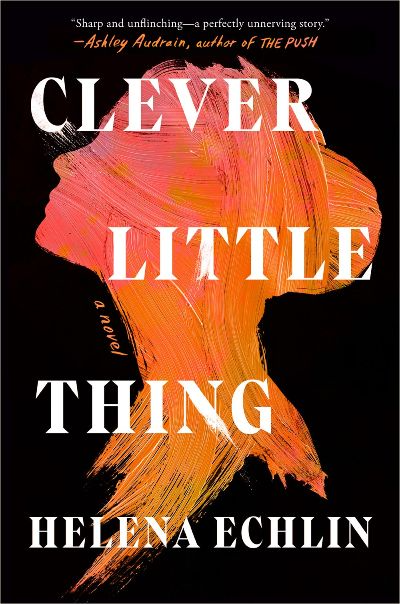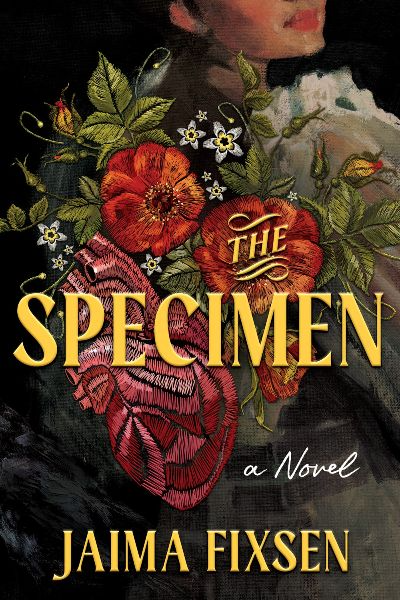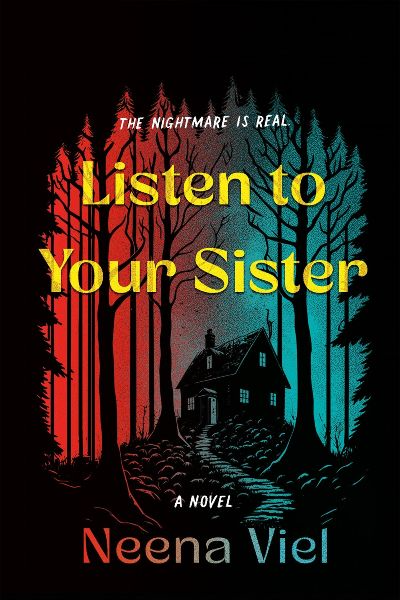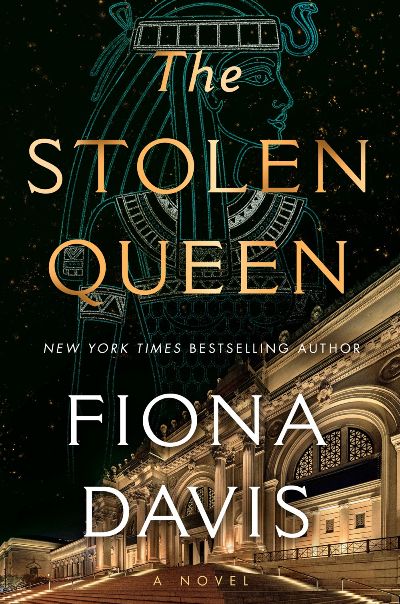The last in the Antonia Scott trilogy offers more tightly plotted terror and a brilliant ending. Antonina has long graduated from the secret program, Red Queen, that made her already-high IQ into a finely tuned weapon. Red Queen (2023) and Black Wolf (2024) saw her working for Mentor at various underworld tasks that needed a cold genius, all the while waiting for her husband, Marcos, to wake from the coma caused during an attack by one of her enemies. Now she’s let Marcos go, but the dangerous work and attacks continue. Others in the Red Queen program are being targeted worldwide, and Antonia’s longtime and beloved sidekick, Jon Gutiérrez, has been targeted in a macabre way. The two face a terrifying countdown during which they must solve crime puzzles posed by the sinister Mr. White. There’s a lot going on here, and it’s best if readers have read the previous books; fans of the related Netflix series, Red Queen, will also be in line to get further inside the thinking of the show’s mysterious lead character and to know how her perilous odyssey ends.
Henrietta Thornton
Gardner Camden has found his perfect home in the FBI’s PAR, or Patterns and Recognition division. Like the department itself, Camden is thought of by other agents as weird, and it doesn’t help that he almost had PAR disbanded by making a terrible mistake that’s kept secret till near the end of the book. Still, he’s brilliant at noticing what nobody else does and relentless at finding the worst of the worst of criminals. He found one of those years before, dead in a fire. But in the case that opens this fascinating thriller, the same man is found dead at a crime scene, with numbers scrawled on his body. Next more killers are found murdered, also with messages to PAR, or maybe to Camden, at the scene. Finding out who is killing serial killers, and why, takes Camden and his lovable team on cross country treks and through psychological torture as the suspect won’t hesitate to go after all the team holds dear. Camden’s first-person narration brings readers inside the head of a steadfast but quirky man (“I’ve been called…Unconcerned. On the spectrum. A weirdo”) as he puzzles out wicked and tangled crimes and the minds behind them. McMahon’s debut novel, the first book in his P.T. Marsh series, was a New York Times Top 10 Crime Novel and a finalist for both the Edgar Award and the ITW Thriller Award, and his other books have been lauded as well. This is more great stuff and a must for your TBR pile.
Comics-creator Segura is back with another mystery that takes a penetrating look at the comics industry, particularly its treatment of women creators. In Secret Identity, the 1975-set prequel to Alter Ego, Carmen Valdez was a struggling artist at Triumph, a small comics publisher. She was promised by a male coworker that if she wrote a new female character, the Legendary Lynx, he would pretend he was the lone creator and reveal her work once the character was successful. You can imagine how that went, only add some murder to the shadiness to get the full picture. This book is set in the present and finds another Cuban American woman artist, Annie Bustamante, going through career struggles. She’s had some success, and she longs to bring back the Lynx, even drawing the character in her spare time. When she’s approached by the son of Triumph’s previous owner to bring the character to the big screen and more, she’s nervous that he’s clueless and she has a hard time getting real details on the project. But when, like Carmen before her, she encounters far more sinister elements of the business, including messages from someone only calling themselves Apparition, things turn very scary. There’s no need to read the previous book to enjoy this one, but readers should grab both for an immersive look at this industry, the muddled ego/fear feelings it engenders, and a great set of murder mysteries.
With a shooting in her past, Liverpool Police detective Sheridan Holler is already known to new chief inspector Hill Knowles when the no-nonsense woman takes the job. Sheridan’s first assignment under the new boss is related to a cold case: Ronald Parks was accused of killing his son, but was acquitted. Now two bodies have been found on the local beach. One is tied to a statue, the other buried so that he drowned when the tide came in. Sheridan must inform the victims’ next of kin, a young bookshop owner, of the deaths, and she becomes central to the case, suffering further losses and dreading the police’s next knock on the door. Given the circumstances, but also because of her doggedness at the job, Sheridan relentlessly pursues all the tenuous clues that come up. Nevertheless it seems that this case may go unsolved. While readers soak in the rich details of life as a year-rounder in an English seaside town, and Sheridan’s loving wife who’s sometimes exasperated at her partner’s dedication to the madness that is police work, Sheridan continues to pick away at the case, leading to a shocking conclusion. Note that there is particularly awful sexual abuse here. A startling and engrossing whodunit.
Get ready to root for two women, strangers to each other, in this fast moving thriller. Madison, WI waitress Jasmine has readers on a knife edge as she sneaks out of her so-called boyfriend’s trailer in the middle of the night to escape his belittling and violence. Stephanie, news director at a TV station in Madison, has things easier, but is lonely. When she goes to San Diego for a conference she doesn’t return to work. Instead she texts her neighbor that she’s met a great man and tells her job she needs unexpected time off…go, girl! But the trip isn’t as it seems. When the two women’s paths cross each other and that of an odious man, things take very unexpected and thrilling turns, right up to an exciting ending twist. There could be less telling and more showing here, but readers will relish following Jasmine and Stephanie as they take the roads less traveled in this absorbing, tightly plotted debut.
Most of this book takes place in the past, when Londoner Charlotte; her American husband, Pete; and their eight-year-old daughter, Stella, await the arrival of a new baby. Charlotte is mainly focused on Stella, but she resists a diagnosis for her while a mom friend with an autistic child urges her to confirm why their children are so alike. The only person Stella seems to get along with is her odd—bordering on sinister, if you ask Charlotte—babysitter, a young Armenian woman named Blanka. She’s not very attentive to Stella, plays odd games, and will only respond “oh, yes,” to every suggestion Charlotte makes, while never once following through. Things take a turn for the stranger after Blanka dies suddenly. Now Stella seems exactly like her former caregiver, craving her strong meat stew (though the family is vegetarian), speaking like her, and in all ways seeming to channel the strange young woman. Readers will be rapt as the family members each retreat to their different corners of the house, literally and mentally; Charlotte’s beliefs are torn apart; and terrible danger looms ever closer. An unusual debut; readers will certainly be on the lookout for more from Echlin and her brilliant portrayal of doubt, fear, and fractured families.
Fans of Philadelphia’s Mutter Museum and of unsettling fiction are ideal audiences for Fixsen’s “STEMinist” latest. The author introduces Isobel Tait, a desperate nineteenth-century Edinburgh mother. Her only child, a sweet boy named Thomas, is sickly, out of breath at the least exertion. When Isobel finally gets him to see an expert, the renowned Dr. Burnett, the boy’s condition is confirmed to be dire: his heart has a damaged valve and his life will be short. Then Thomas disappears. Frantic Isobel tries everything to find him, but it’s all futile and the police have no leads. When she gives in to a ladies excursion to Dr. Burnett’s display of medical oddities, a tiny, preserved human heart emits—to Isobel’s hearing only—the distinct rhythm that Thomas’s did (the music teacher in Isobel would know it anywhere). What follows is an absorbing and expanding mystery around what happened to Thomas and others like him, as well as an in-depth look at the work of resurrectionists—those who procured and used dead bodies to teach and learn anatomy, with competition for bodies fierce and lucrative. The story is based on real events detailed in an afterword by the author. This is ripe for a bookclub discussion on medical ethics.
Calla, 25, has carried her family forever—they’re a “collectively forked tongue, sharp and dangerous”—and their endless needs drag her from the better life she was building. She’s now a fretful, parenting-advice-reading mom to her lovable but wayward younger brother Jamie, 16. Their father is dead; their mean, drunken mother took off; and middle child, Dre, is no help, despite swearing that if Calla became Jamie’s guardian, he’d be there for them. “Redneck Amish Mormons would be better guardians than you,” says Jamie, in one of the book’s many grimly funny moments, and the pinnacle of his unthinking rejection is driving to a Black Lives Matter protest with a group of friends—when he promised Calla he’d stay home—to give the protesters some illicit help. Jamie has been experiencing bizarre moments, such as when his hand dissolves into a girl’s face and he can feel her insides; more of the same happens at the protest, but no excuses can help Jamie with the law when he’s Black and the protest gets violent. Things are simultaneously going monumentally wrong for Dre, who now must also dodge the police; Calla is once again on the hook to save her brothers from themselves. This is where fear and body horror meet hope and love, the siblings’ lengthy battle for one another stretching their emotional and physical limits and revealing their true selves in all their fury and strength. Debut author Viel really brings the horror here, it’s not for the squeamish at all, but those who can brave this epic fight will be rewarded with a story to remember.
Talk about domestic suspense. Julia has moved back to Dublin from San Diego with her kids, who hate their new environment, and her ex-husband, Gabe, who trades time at home with her. Weekends she’s in the house with the children and he’s in a nearby apartment; weekdays the opposite. It’s all very pally, but there’s one big problem: their family seems to be a victim of a social media prank that involves people hiding in attics and jumping out to terrify the residents. Repeated Tik Tok videos, not made by the family, show views of their home as though made by someone inside. And wasn’t there that case, her kids insist, where someone lived in an attic and came out at night to wander the house? Her son is especially terrified—the depth of his fear is clear when his mom tells him not to be afraid to be alone, and he says his fear is that he isn’t alone—prompting Julia to investigate. Weird neighbors and the family’s recent and more distant past offer multiple possibilities for who’s terrorizing them, and readers will enjoy Mara’s taut plotting and believable family dynamics (especially the eye-rolliness of the teen daughter). Julia and her children’s fear comes through so palpably that you’ll be ready to help them move again while silently cursing the useless authorities and blithe Gabe. A gripping read.
The very ancient and the more recent past, the glamor of the fashion world and the dust from excavating for antiquities meet in Davis’s thrilling saga of female determination. In the 1936 part of the story, novice archaeologist Charlotte Cross braves searing temperatures, colonial snobbery, and sexism on a dig in Egypt’s Valley of the Kings, when she unexpectedly finds both treasure and love. In 1978, we find Charlotte working on Egyptian artifacts in New York’s Metropolitan Museum of Art and bristling when jewelry from the vast collection is earmarked for use on a mannequin at the Met Gala. (No Kardashians were harmed in the making of this book.) On the fashion side of the gala loan is Annie Jenkins, a young woman who’s under her lazy mother’s heel until her life starts to open up after a chance meeting with Diana Vreeland. Happenings on the night of the gala fuel the rumor that female Pharaoh Hathorkare, a subject of Charlotte’s work in the ‘30s and now, brings destruction to anyone who deals with her. (An author’s note explains that Hathorkare is loosely based on Hatshepsut.) Finding out who’s really behind an audacious crime at the gala reveals why Charlotte hasn’t been able to face visiting Egypt all these years. It also shines a light on the real-life debate around repatriation of art to its country of origin. A thought-provoking and exciting read.

